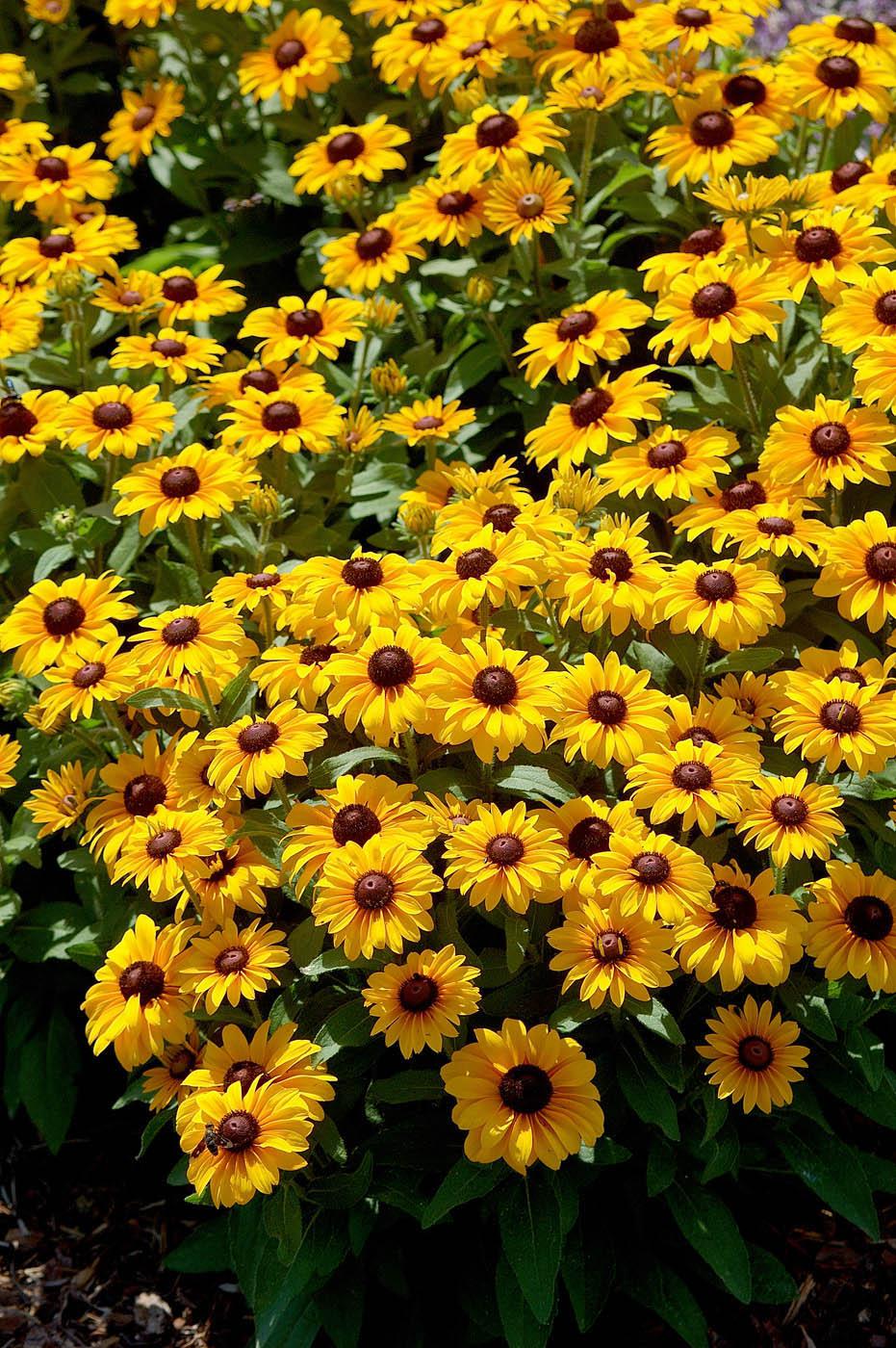Information Possibly Outdated
The information presented on this page was originally released on July 10, 2008. It may not be outdated, but please search our site for more current information. If you plan to quote or reference this information in a publication, please check with the Extension specialist or author before proceeding.
Garden 'eyes' focus on prolific rudbeckia
By Norman Winter
MSU Horticulturist
Central Mississippi Research & Extension Center
The phrase “eye of the tiger” may signify immediate danger or attack, but in the garden it will soon mean incredible beauty. As you look into the new rudbeckia called TigerEye, you will see orange and yellow with a dark brown eye lined in gold.
TigerEye is a Gloriosa daisy, and these plants really strut their stuff in the garden this time of year. If you aren't familiar with the name Gloriosa daisy, you have probably called them black-eyed Susans, or maybe even yellow or orange coneflowers.
TigerEye is the first F1-hybrid rudbeckia. Most likely you will not find it until next year, but it will be a prize when you do.
Mississippi State University has been growing TigerEye in our trials, and I don't think I have ever seen as many flowers on one rudbeckia plant. TigerEye will get about 24 inches tall with an equal spread. The flowers are not as large as Indian Summer, which we might call softball size, but they are close to tennis ball size. Reportedly, it has a reduced sensitivity to powdery mildew, though this is rarely a problem.
These daisy-like flowers fall under the genus Rudbeckia. Some of the most popular are Rudbeckia hirta varieties like the All-America Selections-winning Indian Summer and Prairie Sun. We also have last year's introduction, the compact Corona with equally large 6- to 9-inch flowers.
The Rudbeckia fulgida variety sullivantii gives us the famous Goldsturm, which has won numerous awards including the Perennial Plant of the Year. This one will be a long-term perennial in your garden.
The Rudbeckia triloba is another outstanding species native to a wide area of the United States. This was a Georgia Gold Medal winner, and it is a winning plant just about anywhere. It is desperately in need of a name. I wish they had called it Georgia Gold. It is a prolific blooming perennial that is sometimes treated as an annual.
Rudbeckia triloba has an abundance of yellow flowers with button-shaped black centers produced at the ends of many-branched stems. It is very erect, growing about 3 feet tall, spreading and bushy. The leaves are dark green and divided into three oval parts, hence the name triloba.
Rudbeckias are really easy-to-grow plants if they have full sun and fertile, well-drained soil. If you are plagued with compacted clay, then by all means loosen with 3 to 4 inches of organic matter, and you will find great success.
Rudbeckias scream “cottage garden” and even look like dreamy wildflower meadow plants. They are adored by both bees and butterflies. Depending on your selection, you will want to space them 18 to 24 inches apart and to the back or middle of the border.
Good companion plants for a long summer of dazzling performance would be Salvia farinacea like Victoria Blue or Evolution or the taller Mystic Spires Blue. The spiky texture of the angelonia or summer snapdragon also makes for an idyllic partnership. Look for varieties like AngelMist or AngelFace. For shorter partners, look for verbenas like Homestead Purple, Tapien Violet or Biloxi Blue.
With new plants coming like TigerEye, you have to admit it is a fun time to be a gardener.



